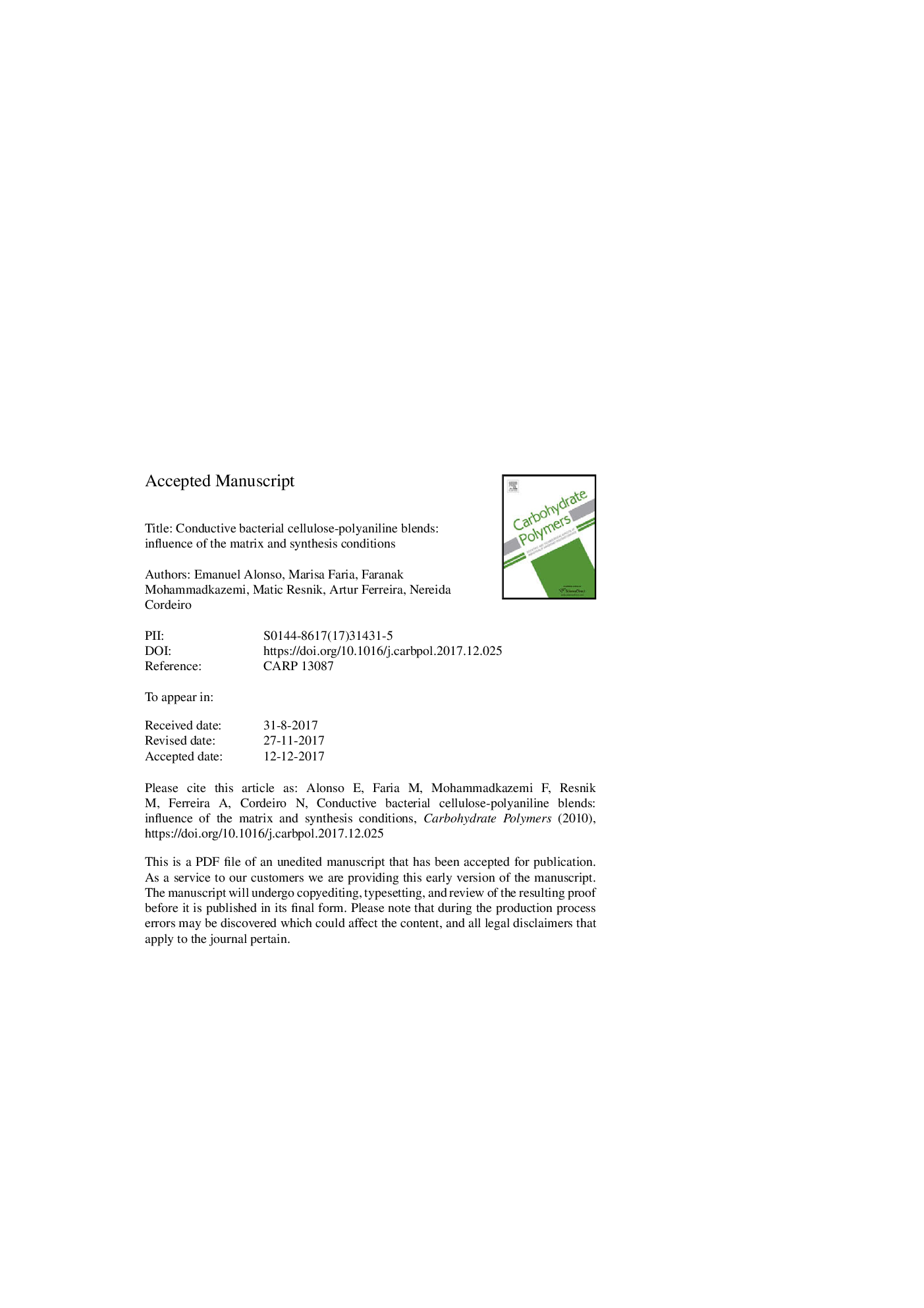| Article ID | Journal | Published Year | Pages | File Type |
|---|---|---|---|---|
| 7784174 | Carbohydrate Polymers | 2018 | 27 Pages |
Abstract
Bacterial cellulose/polyaniline (BC/PANi) blends present a great potential for several applications. The current study evaluates the impact of using different BC matrixes (drained, freeze-dried and regenerated) and different synthesis conditions (in situ and ex situ) to improve the inherent properties of BC, which were monitored through FTIR-ATR, EDX, XRD, SEM, AFM, swelling, contact angle measurement and IGC. The employment of in situ polymerization onto drained BC presented the most conductive membrane (1.4â¯Ãâ¯10â1â¯S/cm). The crystallinity, swelling capacity, surface energy and acid/base behavior of the BC membranes is substantially modified upon PANi incorporation, being dependent on the BC matrix used, being the freeze-dried BC blends the ones with highest crystallinity (up to 54%), swelling capacity (up to 414%) and surface energy (up to 75.0â¯mJ/m2). Hence, this work evidenced that the final properties of the BC/PANi blends are greatly influenced by both the BC matrixes and synthesis methods employed.
Related Topics
Physical Sciences and Engineering
Chemistry
Organic Chemistry
Authors
Emanuel Alonso, Marisa Faria, Faranak Mohammadkazemi, Matic Resnik, Artur Ferreira, Nereida Cordeiro,
